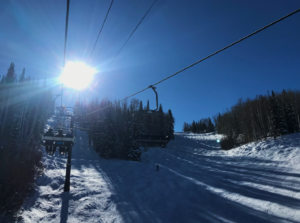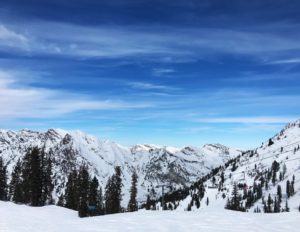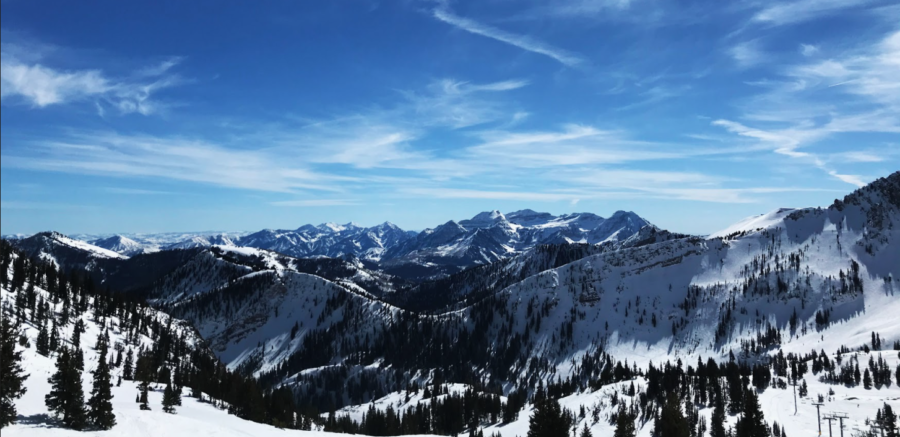Centennial vs Beehive: The Great Snow Debate
A Competition of Snow: Utah vs Colorado Who Has Better Snowflakes? Utah vs Colorado
As I gaze out my bedroom window with my nose to the glass, delicate flecks fall from the night sky. The ground is illuminated, yet quiet — life muffled by this soft blanket covering the earth. I crack the window ever so slightly to let the crisp, clean air fill my lungs with the scent of snow.
Now some may argue that snow doesn’t have a smell. I’d disagree, but I’m not here to talk about its aroma, I’m here to talk about what it feels like, specifically when sliding through it on one or two planks.
Here in the Mountain West, snow is not a topic to be taken lightly. One of the great snow debates of this region we call home is Utah vs Colorado. Utah and Colorado are home to a combined 47 ski resorts — Utah with 15 and Colorado with 32.
When people talk about Utah skiing, you can bet that they are talking about the Wasatch Front. Snowbird, a world famous ski area, is known for its steep terrain and has Utah’s longest season. The snow that Snowbird (and the rest of the ski resorts around Salt Lake City) gets is claimed to be the “greatest snow on earth.” It says so on our license plates and it’s plastered on everything from billboards to social media. So, is it true?
Jim Steenburgh, an atmospheric scientist at the University of Utah, has researched the specific claim of Utah having the “greatest snow on earth,” and has found that it comes down to flotation. Flotation, in snow terms, has to do with the water content (or density) of the snow, and weather patterns where lighter snow falls on heavier snow.
Steenburgh points out that “flotation exists when light snow has enough body, or is ‘bottomless,’ to keep skis and snowboards on the upper layer of snow without scraping the base”. This is especially beneficial for powder skiing, which is usually the snow that people are talking about when discussing its quality. To create this unique flotation, Utah often experiences what Steenburgh calls “Goldilocks storms,” — storms that create Utah’s unique deep-powder snow that is just right for skiing.
 The snow in Utah is high quality, no doubt about it. And with annual snowfall reaching over 500 inches and a snow density of 8.5%, according to skiutah.com, it’s hard to be disappointed when skiing in the Wasatch mountains. Although, that quantity is changing. Snowfall averages are dropping all across the mountain west and many parts of the world. But as we saw from Steenburgh’s research, it’s not all about frequency and quantity. Other factors that inform the snow debate include consistency, melting rate, and weight. As my fellow avid skier and Steamboat-native friend Reilly Mewborn put it, “Just because you get more snow doesn’t mean it’s the greatest snow on earth.” Hard pill to swallow for die-hard Utahn skiers, but a good point to consider.
The snow in Utah is high quality, no doubt about it. And with annual snowfall reaching over 500 inches and a snow density of 8.5%, according to skiutah.com, it’s hard to be disappointed when skiing in the Wasatch mountains. Although, that quantity is changing. Snowfall averages are dropping all across the mountain west and many parts of the world. But as we saw from Steenburgh’s research, it’s not all about frequency and quantity. Other factors that inform the snow debate include consistency, melting rate, and weight. As my fellow avid skier and Steamboat-native friend Reilly Mewborn put it, “Just because you get more snow doesn’t mean it’s the greatest snow on earth.” Hard pill to swallow for die-hard Utahn skiers, but a good point to consider.
So what does Colorado snow offer in quality, if not the same quantity as Utah? Steamboat Resort has trademarked what they call “Champagne Powder,” unique because it has the “lowest water content in the United States, an average of 6%.” That’s 2-3% drier than what Utah averages. This lower snow water equivalent is generally attributed to Colorado being further from the Pacific Ocean than Utah. Given that Champagne Powder has such a low water content, it makes for very light, airy snow that is regarded as ideal for powder skiing. Steamboat says that “Champagne powder” was coined in the early 1950s by Joe McElroy, a local rancher who “was out skiing on terrain that eventually would become the ski area and said the snow tickled his nose like champagne.”
Steamboat Resort is world-renowned not only for its champagne powder but also for “producing more winter Olympians than any other place in the U.S” — 104 to be exact (colorado.com). If a good chunk of the best of the best winter athletes are coming from Steamboat, then there has to be something special going on with the snow in Colorado.
 Most participants in the Utah vs Colorado debate will agree to disagree, leaving no clear victor. In my experience, the “participants” are passionately opinionated Utah/Colorado locals that you run into online or in person. If the average snowfall was the only basis for the “best snow,” then Utah would win every time, but if you’re a winter enthusiast, then you know it’s not just about quantity.
Most participants in the Utah vs Colorado debate will agree to disagree, leaving no clear victor. In my experience, the “participants” are passionately opinionated Utah/Colorado locals that you run into online or in person. If the average snowfall was the only basis for the “best snow,” then Utah would win every time, but if you’re a winter enthusiast, then you know it’s not just about quantity.
With all this being said, the world still hasn’t come to a conclusion on who wins the contest of “best snow on earth,” and I don’t think it ever will. Pride in snow quality is too strong in these two neighboring states, and the arguments for each have merit. All I know for sure is that both places have great snow and great skiing. So I guess all that’s left to do is take this debate to the mountains and experience it for yourself.
Catch ya on the slopes.

